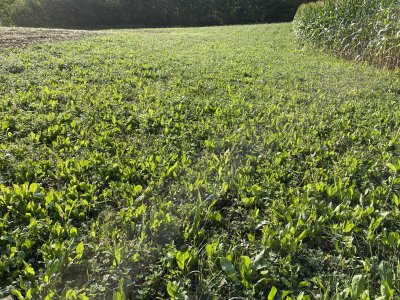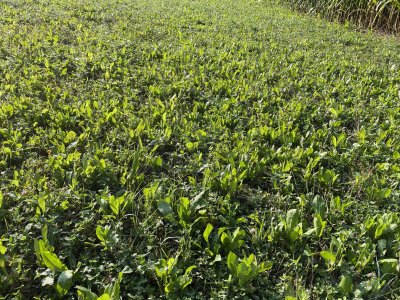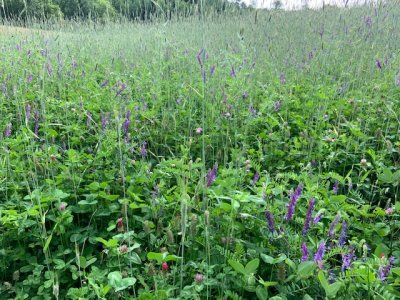Foggy ... I am in zone 4b and we see have seen extended winter temps in the mid -25 F. Medium red clover has done well over winter and good spring regrowth.
One clover you may want to look into is Frosty Berseem. Welters has it and claims it will withstand temps down to 5 F before dieback. You may want to call them to see what experience they have with over winter temps.
Frosty Berseem
I still like med red clover for cost and volume of forage in the spring.
I have no difficulty with over wintering of white clovers and red clovers.....none. Those come back year after year no problem. I'm just looking for more diversity and nitrogen providing alternatives that I can plant in fall. Those clovers are tough to terminate......and they normally come back to haunt me when I tray to grow brassica in late summer. I have a love / hate thing with clovers. At this point I am trying to go with the "good attributes" of clover and just plant chicory as my late season "draw". The chicory and clover play well together and perhaps this will prove to be the ticket. I added yellow sweet clover this year after seeing how that worked for SD..
I'm trying to find varieties that will work in Zone 3 - down to -30 f: (my crops currently being planted are in parenthesis).
.......I'm generally in AZ from December thru Early May each year.....and Im needing a plan that can work well with that schedule. Thus: A tough requirement.
1. Allow fall (august) planting and overwinter for the next May / June / July time frame. (winter rye, red and white clovers, AW Peas, Yellow sweet clover, chicory)
2. Provide nitrogen for following crops or compatible crops. (clovers, AW Peas,)
3. Provide Nutrition especially in early spring when deer are literally dying of starvation after a hard winter. (rye, red clover, white clover)
4. Provide Fawning cover from Bears, coyotes, occasionally wolves and bobcats through at least June. (rye / yellow sweet clover)
5. EASY TO TEMINATE for a fall candy crop. Or contain the fall candy crop from last season. (chicory)
6. Crops that can grow well in sandy soils with little fertilizer and / or herbicides needed. Possible periods of drought each year. Deeply rooted crops seem to survive as the water table is 3 to 5 feet below grade in many areas. (chicory, GH Radish, Turnips, Sorghum, Egyptian wheat, yellow sweet clover in year two.)
I forgot to buy some frosty beseem clover this year.....and wanted to try a few other varieties too. Only so much time. My big event this year is to try that yellow sweet clover.....and determine if I can handle the biomass in year two. I am fully invested in chicory too....as a possible alternative to brassica? <----- That is a leap of faith for me.



